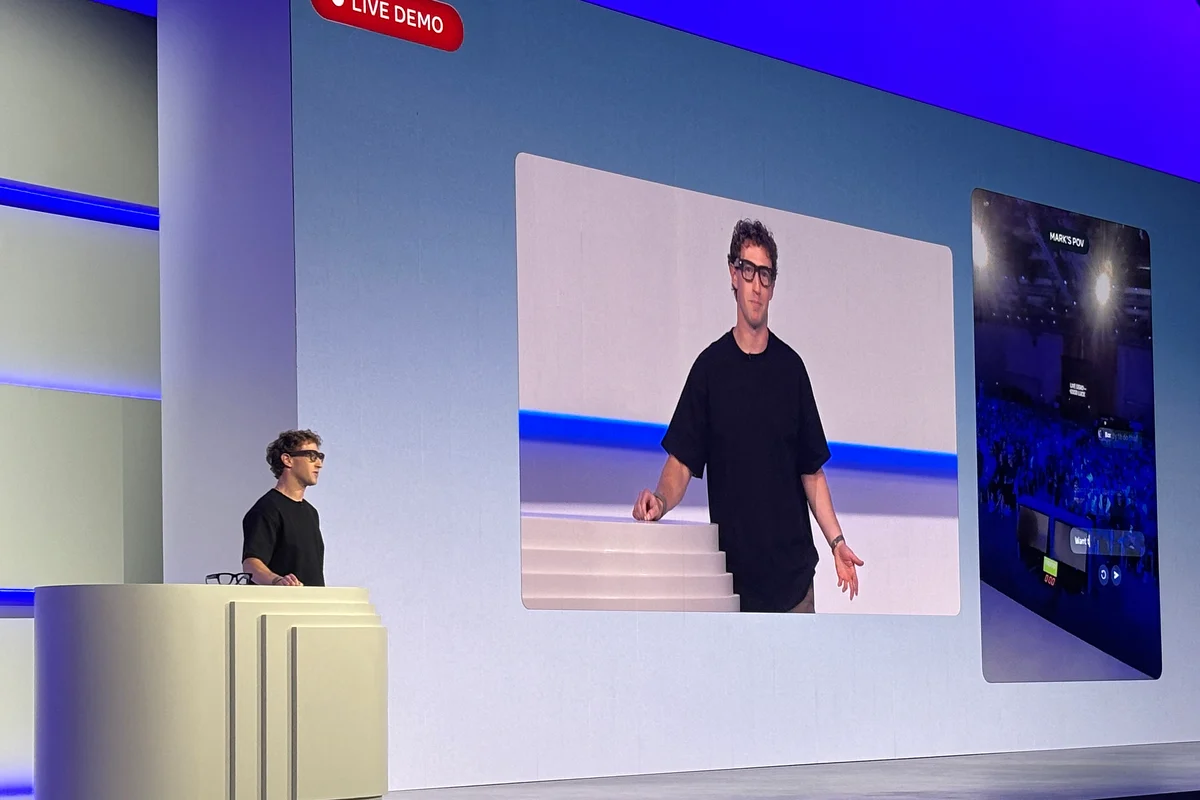By Will Rogers-Coltman
Copyright standard

Leopard shark ‘threesome’ filmed
Dr Hugo Lassauce, a researcher from the University of the Sunshine Coast, Australia, was doing his daily snorkel monitoring leopard sharks when he saw something no human has witnessed. Two males were swimming alongside a female’s pectoral fins; upon closer inspection they were mating.
The footage he captured, published in the Journal of Ethology, is the first of its kind. Leopard sharks are critically endangered and Lassauce’s discovery should provide crucial information about their mating patterns and locations, aiding conservation efforts.
Meta’s new smart-(ish) specs
Last week, Meta’s CEO, Mark Zuckerberg, hosted a keynote presentation to showcase the latest Meta Connect smart glasses product. The event had a mixed response, with live demonstrations going awry, from Zuckerberg failing to get the glasses’ phone call function to work after four attempts, to an onstage chef accidentally activating hundreds of sets of glasses in the audience by saying ‘Hey Meta, start live AI’ on the mic.
Regardless of the awkward showcasing, Zuckerberg maintains this tech will be vital for cognitive advantage in the future. The wearable hardware allows users to constantly be in dialogue with an AI chatbot, view the world through augmented reality and take photos or videos. These advantages come at a cost, however, including looking like the grandpa from Up.
It’s the economy, stupid
A study from Erasmus University suggests poorer areas have lower fertility rates, complicating the assumption that wealth alone drives slower population growth. Based on more than 6,000 participants, the research showed a strong link between social disadvantage and fertility outcomes.
The study found poverty, lower education and reduced household income were consistently associated with a lower likelihood of conceiving. The findings emphasise the need for targeted public health strategies to better support disadvantaged couples.
Gene therapy could help fight Huntington’s
Huntington’s disease is a rare brain illness with no known cure. But pharmaceutical companies are in a race to find the most efficient treatments. This week, the results of an exciting trial were published in Nature, which tackled the defective huntingtin gene at its root cause through gene therapy.
Using a revolutionary technique that uses a micro DNA as a kind of muzzle to stop the huntingtin gene from producing the damaging protein that slows the brain, the results from the trial were promising. 75 per cent of the 29 participants – who received a high dose of the treatment directly into their brains – saw an improvement in their condition of the disease, a drastically higher rate than most treatments available today.
A bone to pick with history
A million year old skull discovered in China has forced scientists to rethink the entire origin story of the human species – also known as the Homo sapiens. Previously, experts thought Homo sapiens emerged as a distinct group of prehistoric large brained mammals around 600,000 years ago, alongside the over groups of erectus, heidelbergensis, longi and neanderthalsis.
However, after much analysis, experts, who digitally reconstructed a skull that was found in the Hubei province of China, have concluded it was not from a homo erectus – as previously thought – but a Homo longi, also known as “Dragon Man”.
The new perspective on the skull changes everything, suggesting our ancient ancestors split into their distinct groups one million years ago, far earlier than previously estimated.



